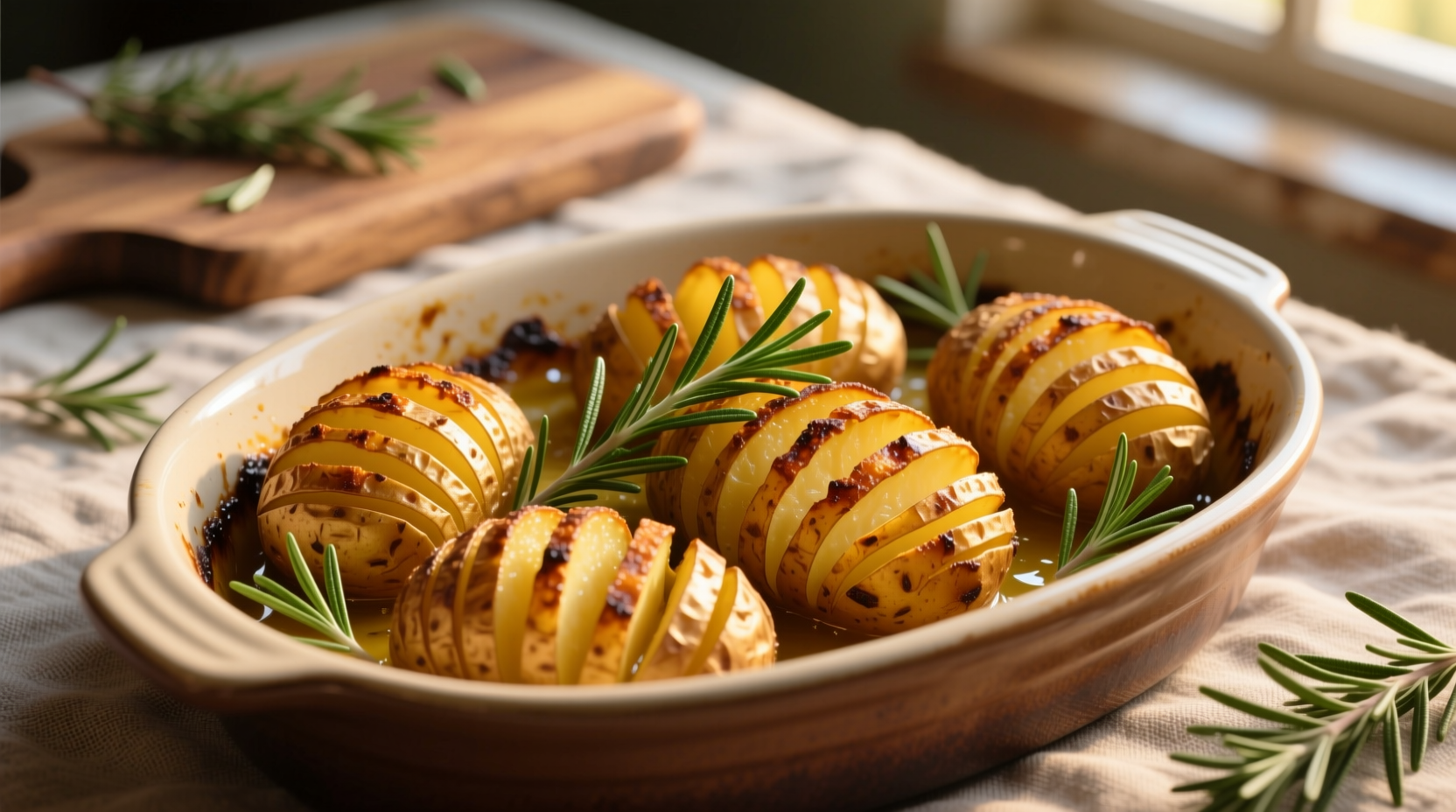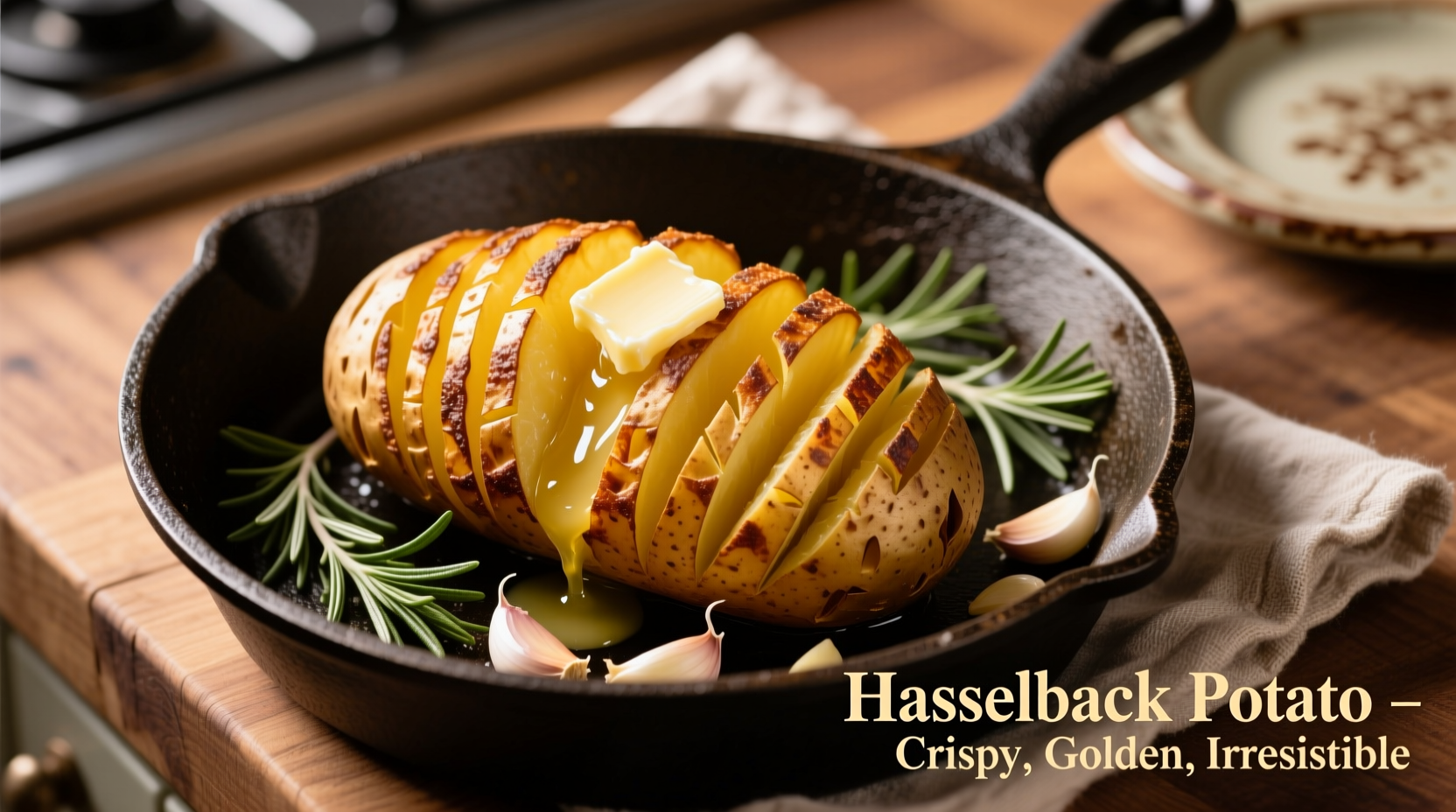Discover how to master this impressive yet simple potato preparation that elevates any meal from weeknight dinner to special occasion fare. Whether you're a beginner cook or seasoned chef, this guide delivers professional techniques for perfect hasselback potatoes every time.
The Hasselback Technique: More Than Just Sliced Potatoes
Originating in Sweden in the 1950s at Stockholm's Hasselbacken restaurant, this preparation method creates a distinctive accordion pattern that serves multiple culinary purposes. The precise slicing allows heat to penetrate evenly while creating maximum surface area for caramelization. Unlike regular roasted potatoes, hasselback potatoes develop crispy ridges on the exterior while maintaining a fluffy interior.
Food science explains why this technique works so well: the thin slices create more edges that dehydrate during cooking, triggering the Maillard reaction for superior browning. The connected base ensures the potato maintains its structural integrity while cooking, unlike diced potatoes that can become unevenly cooked.
Essential Tools for Perfect Hasselback Potatoes
While you can create hasselback potatoes with basic kitchen tools, these specialized items make the process easier and more consistent:
- Sharp chef's knife (8-10 inch) for precise slicing
- Chopstick or wooden spoon handle to prevent cutting all the way through
- Basting brush for even oil application
- Rimmed baking sheet with parchment paper
- Pastry brush for applying seasonings between slices
| Tool | Why It Matters | Professional Tip |
|---|---|---|
| Chopstick guide | Prevents cutting through potato base | Place chopsticks on either side of potato for consistent depth |
| Rimmed baking sheet | Contains drips and promotes even air circulation | Line with parchment for easy cleanup and non-stick surface |
| Pastry brush | Reaches between slices for even seasoning | Use melted butter or oil for better adhesion of seasonings |
Step-by-Step Hasselback Potato Preparation
Follow this professional method to achieve restaurant-quality results at home:
- Select the right potatoes - Choose uniform medium-sized Yukon Gold or Russet potatoes (about 6-8 ounces each) for consistent cooking
- Wash and dry thoroughly - Moisture prevents crispiness, so pat potatoes completely dry
- Create your slicing guide - Place chopsticks on either side of the potato to prevent cutting all the way through
- Slice precisely - Make 1/8-inch slices perpendicular to the long axis, stopping at the chopsticks
- Season strategically - Fan slices open and brush oil between layers before final surface application
- Rack position matters - Place on middle oven rack for optimal heat circulation
- Rotate halfway - Turn sheet 180 degrees for even browning on all sides
Cooking Methods Compared
Different cooking methods yield distinct textures and flavors. Choose based on your desired outcome:
- Oven roasting (400°F/200°C) - Traditional method producing golden-brown edges with fluffy interior (45-55 minutes)
- Air frying (380°F/190°C) - Creates extra-crispy exterior in less time (25-30 minutes) with less oil
- Grilling (medium heat) - Adds smoky flavor but requires careful monitoring to prevent burning (30-40 minutes)
For optimal results, always preheat your cooking appliance and avoid overcrowding potatoes on the baking sheet. The USDA Food Safety and Inspection Service recommends cooking potatoes to an internal temperature of 205-210°F (96-99°C) for ideal texture.
Flavor Variations That Impress
While classic garlic-herb seasoning works beautifully, these professional variations elevate hasselback potatoes to new heights:
- Truffle Parmesan - Brush with truffle oil and sprinkle grated Parmesan between slices during last 10 minutes of cooking
- Everything Bagel - Press everything bagel seasoning between slices before roasting for savory crunch
- Maple Bacon - Alternate layers of crumbled cooked bacon and maple syrup for sweet-savory complexity
- Mediterranean Herb - Infuse olive oil with rosemary, thyme, and garlic before brushing between slices
When developing your own variations, remember that fats carry flavor deeper into the slices. The American Culinary Federation recommends using melted butter or infused oils rather than dry seasonings alone for maximum flavor penetration.
Troubleshooting Common Hasselback Problems
Even experienced cooks encounter these issues. Here's how to fix them:
- Slices sticking together - Insert a thin knife between slices after the first 15 minutes of cooking to separate them
- Uneven browning - Rotate baking sheet 180 degrees halfway through cooking and ensure consistent slice thickness
- Soggy texture - Pat potatoes completely dry before slicing and avoid overcrowding on the baking sheet
- Burnt edges - Reduce oven temperature by 25°F and tent with foil during final cooking stages
For perfect results, choose potatoes of similar size when making multiple hasselbacks. The National Potato Council notes that potatoes with higher starch content like Russets create crispier exteriors, while waxy varieties maintain more structural integrity but produce less pronounced ridges.
Serving Suggestions That Shine
Hasselback potatoes pair beautifully with proteins and vegetables. Consider these professional pairings:
- With roasted meats - Complements beef tenderloin, pork loin, or herb-crusted lamb
- As part of brunch - Top with a fried egg and chives for elevated breakfast potatoes
- With seafood - Serve alongside pan-seared salmon or herb-roasted chicken
- Vegetarian centerpiece - Fill with goat cheese and roasted vegetables for a main course
For presentation, place potatoes upright in serving dishes to showcase their distinctive accordion pattern. The James Beard Foundation recommends garnishing with fresh herbs that match your seasoning profile for visual appeal.

Why Hasselback Potatoes Deserve a Place in Your Repertoire
This technique transforms a humble potato into an impressive side dish with minimal effort. The unique preparation creates maximum surface area for crispiness while maintaining a tender interior, offering textural contrast that regular roasted potatoes can't match. Unlike mashed or boiled preparations, hasselback potatoes provide visual drama that elevates any meal without requiring advanced culinary skills.
Mastering this technique opens doors to creative variations that can adapt to any cuisine or occasion. From weeknight dinners to holiday feasts, hasselback potatoes deliver consistent results that impress guests while satisfying your craving for perfectly crispy potatoes.











 浙公网安备
33010002000092号
浙公网安备
33010002000092号 浙B2-20120091-4
浙B2-20120091-4